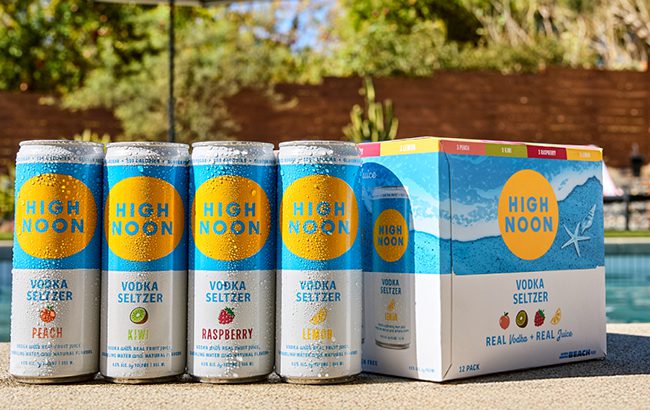RTDs to own 9% share of US alcohol by 2029
By Nicola CarruthersDespite a slowdown in growth, the ready-to-drink (RTD) category is expected to reach a 9% share of the total beverage alcohol (TBA) sector in the US by 2029.

According to IWSR’s RTDs Strategic Study 2025, the category posted a volume gain of 2% in 2024 across 10 key markets that represent 82% of global volumes: Australia, Brazil, Canada, China, Germany, Japan, Mexico, South Africa, the UK and the US.
The category’s value rose by 4% last year.
South Africa saw a 12% rise in RTD volumes last year, becoming the third-biggest country for RTDs of the 10 markets, after previously holding the fifth spot.
Brazil also posted a 12% gain last year and the US rose by 1%.
RTDs now have a 3.5% share of TBA across the 10 markets, up from 1.1% in 2014.
Across the 10 key markets, IWSR estimates that RTDs’ share of TBA will reach 4% by 2029, up from 2% in 2019. The category held a particularly strong TBA share in 2024: 8% in the US, 8% in Canada, 9% in Australia 13% and Japan.
Two out of 10 markets decline
RTDs continue to outpace TBA growth in eight out of the 10 markets, with only China and Australia in decline last year, down by 14% and 6% respectively. IWSR noted the two markets are currently suffering structural TBA decreases.
However, the other markets all grew, but at a slower rate than their 2019-24 compound annual growth rate (CAGR) volume increases.
Future volume gains will be concentrated in several key markets where RTDs have a higher TBA share, as well as Brazil.
From 2024 to 2029, IWSR predicts CAGR volume increases of 1% for the US, 3% for South Africa, 7% for Brazil and 3% for Japan.
“In an increasingly competitive TBA market, RTDs are the beacon of hope,” said Susie Goldspink, head of RTD insights.
“The biggest growth opportunities lie in established markets where RTDs already hold a TBA volume share of more than 5%. Despite a recent slowing of growth, RTDs will continue to gain share of TBA, particularly in the strongholds of the US and Canada, which are more diverse RTD markets, and in Japan, although it offers less product diversity.”
However, Goldspink warned broader TBA factors could “limit opportunities in other RTD strongholds”, such as the category being more expensive in markets like the Australia, the UK and Germany.
She added: “This, along with lower participation levels, ageing consumers and lower frequency in these markets, impacts their potential.”
In terms of flavours, IWSR noted citrus variants, especially lemon, tend to be the most popular choice among RTD buyers.
The category is also increasing in the on-trade, which held a 12% share of RTD volumes in the 10 key markets last year, led by Brazil (37% share) and South Africa (30% share).
This is up from the category’s 8% share it previously held in the 10 markets in 2021.
Vodka and gin ‘losing ground’ to RTDs in US
Spirits-based RTDs are thriving in the States, with IWSR predicting they will dominate RTD volume growth to 2029, boosted by ‘category-leading levels of innovation’ and new product development.
IWSR US Navigator data showed vodka and gin volumes declined during the months of July and August 2025, but spirits-based RTDs grew in April. On a month-by-month basis, their volumes have risen by between 7% and 10% since 2019 and have seen only modest decreases in August versus July (down by between 2%-4%).
IWSR said there were signs the growth of spirits-based RTDs was also affecting apéritifs. While apéritifs grew strongly in the US during 2019 and 2021, their volumes have plateaued since 2022 – a period during which spirits-based RTDs have continued to climb.
“Our US Navigator findings clearly show that RTDs are leading in terms of resonance with consumers during the early summer period, while beer takes over later in the year,” said Marten Lodewijks, president, IWSR US. “At the same time, there are signs that vodka, gin and apéritifs are all losing ground to spirits-based RTDs.”
Related news
‘Modernised’ RTD laws could generate $10.9m in Quebec
